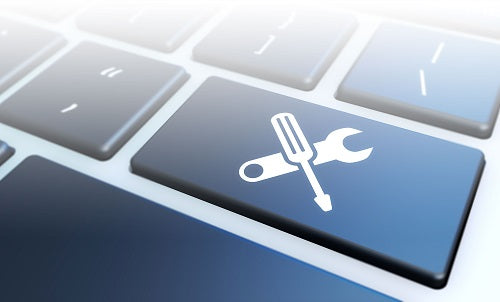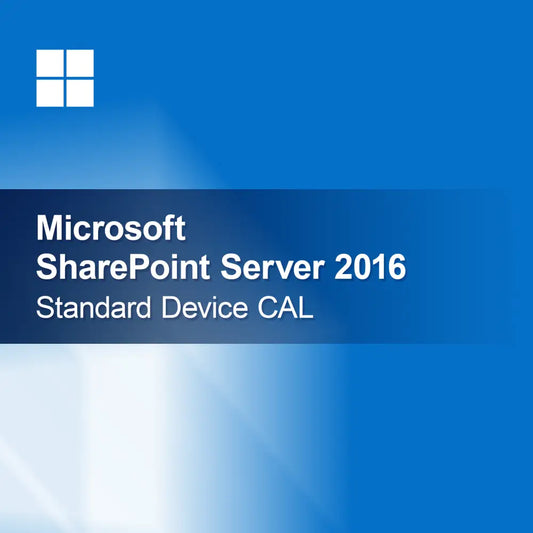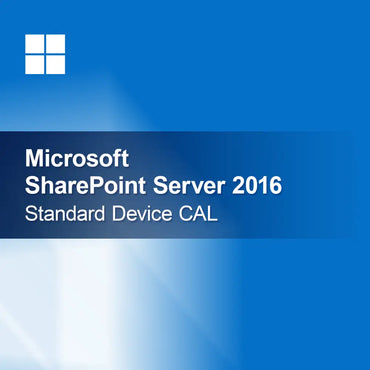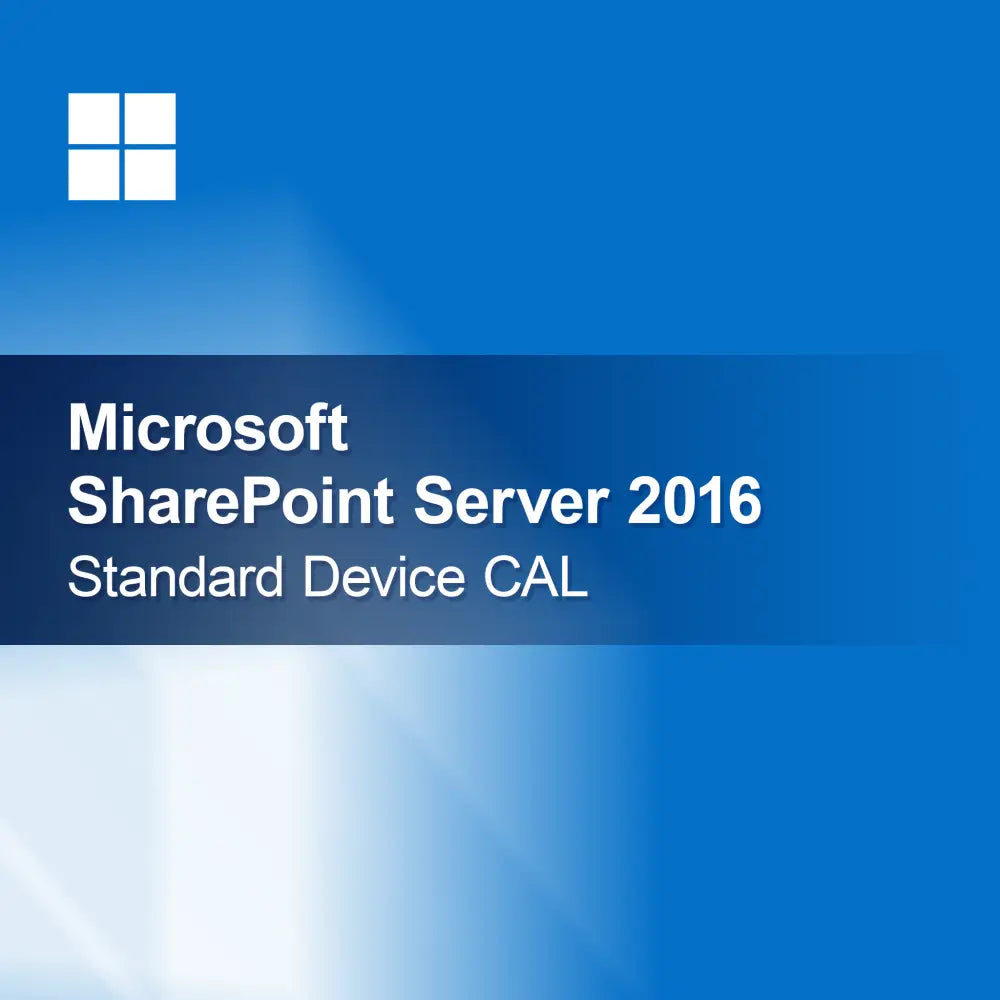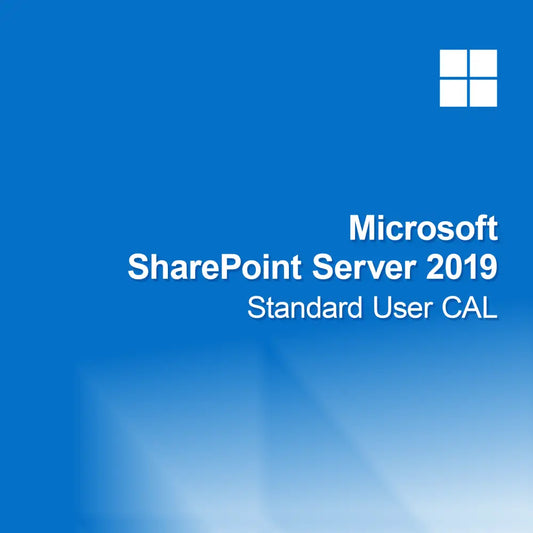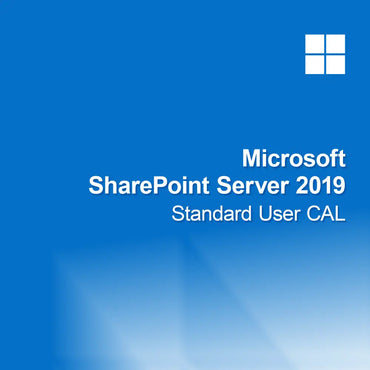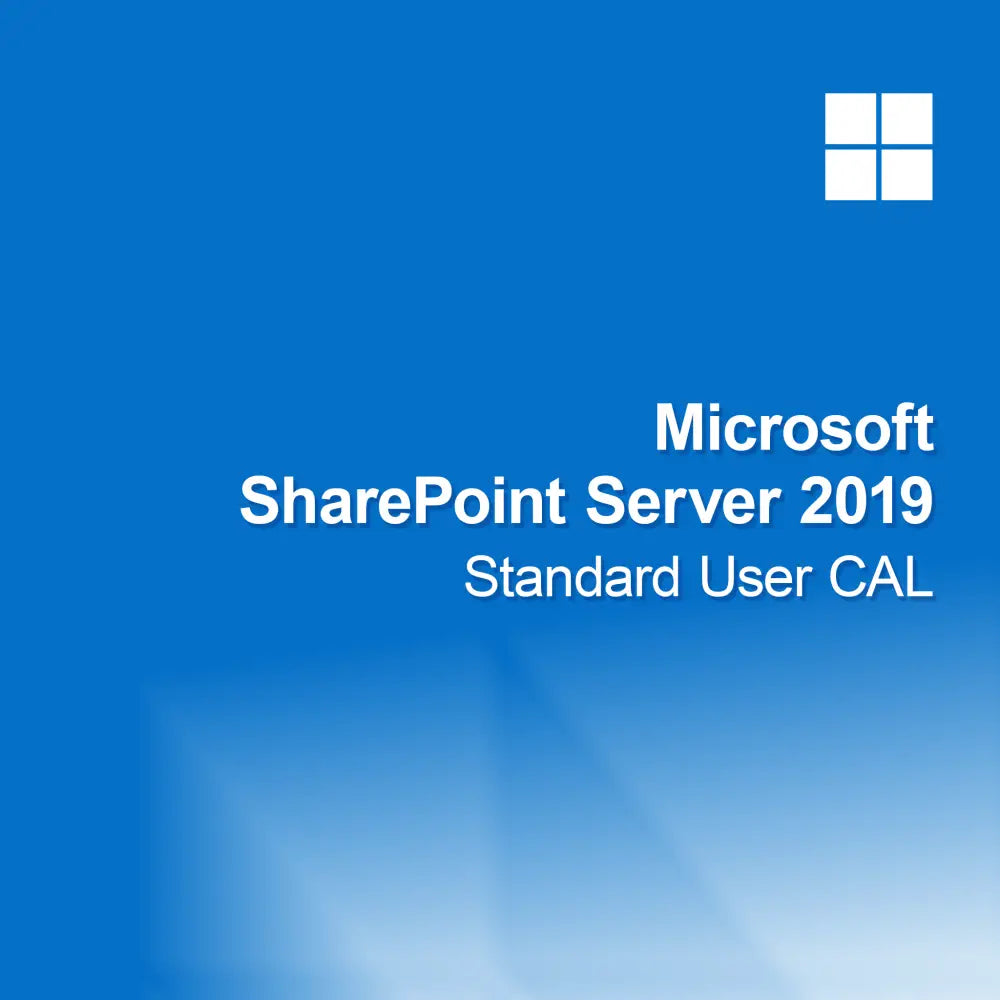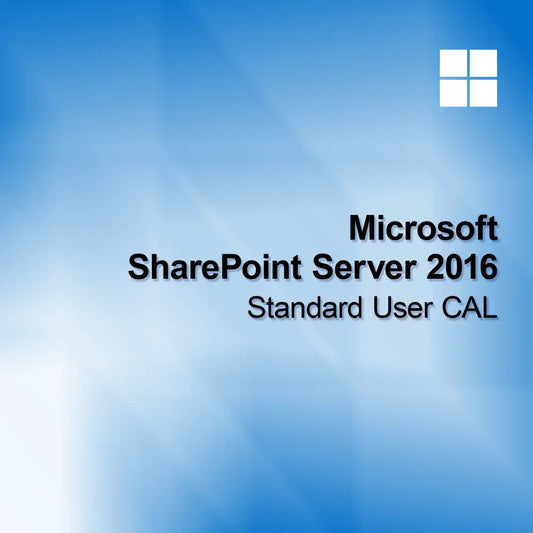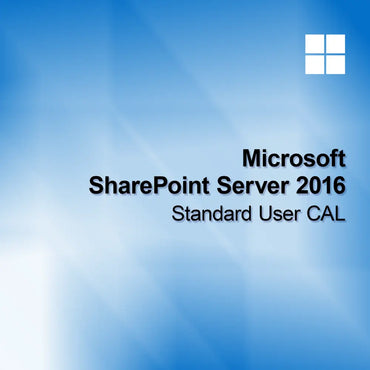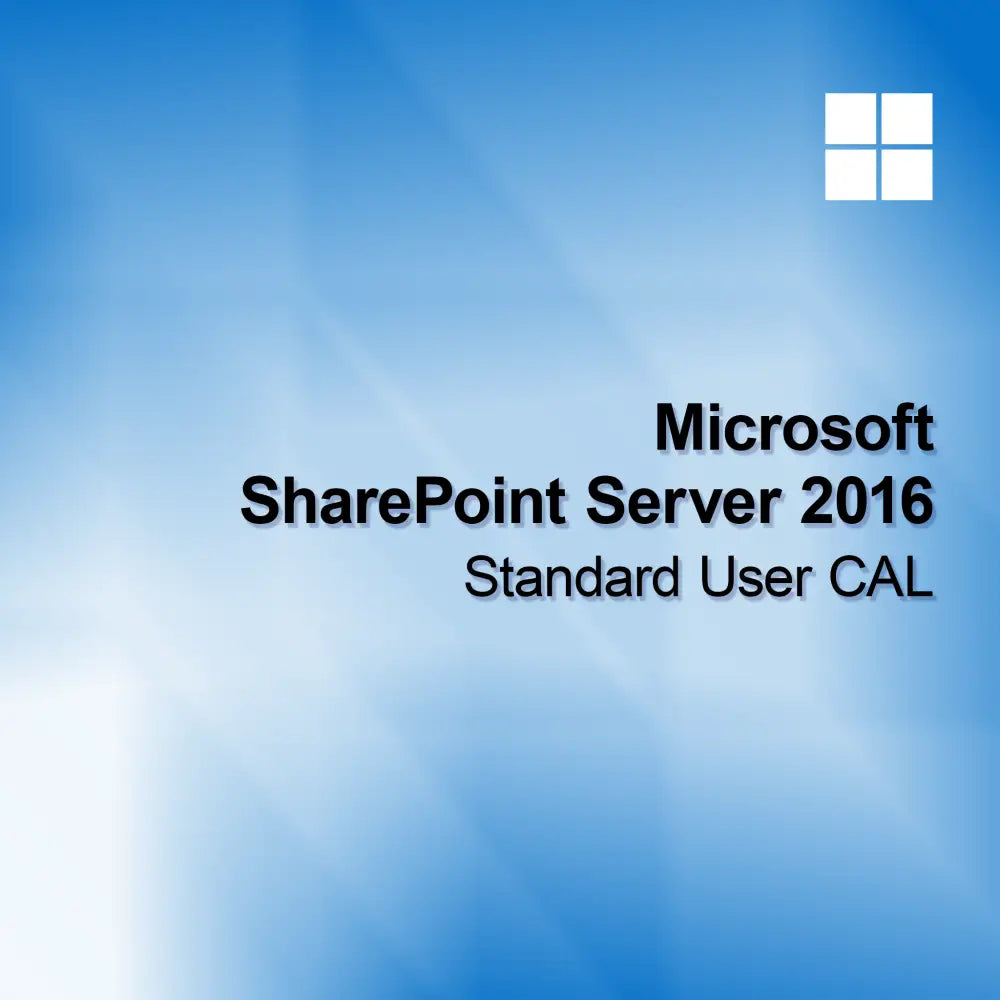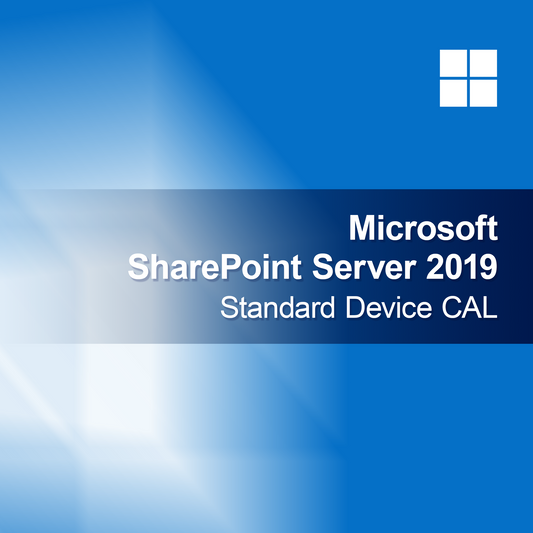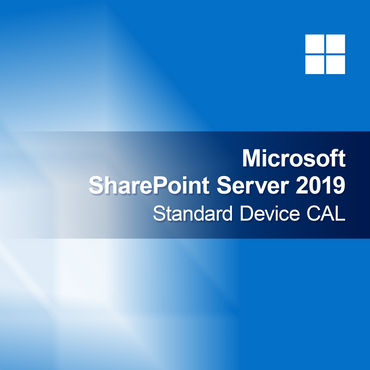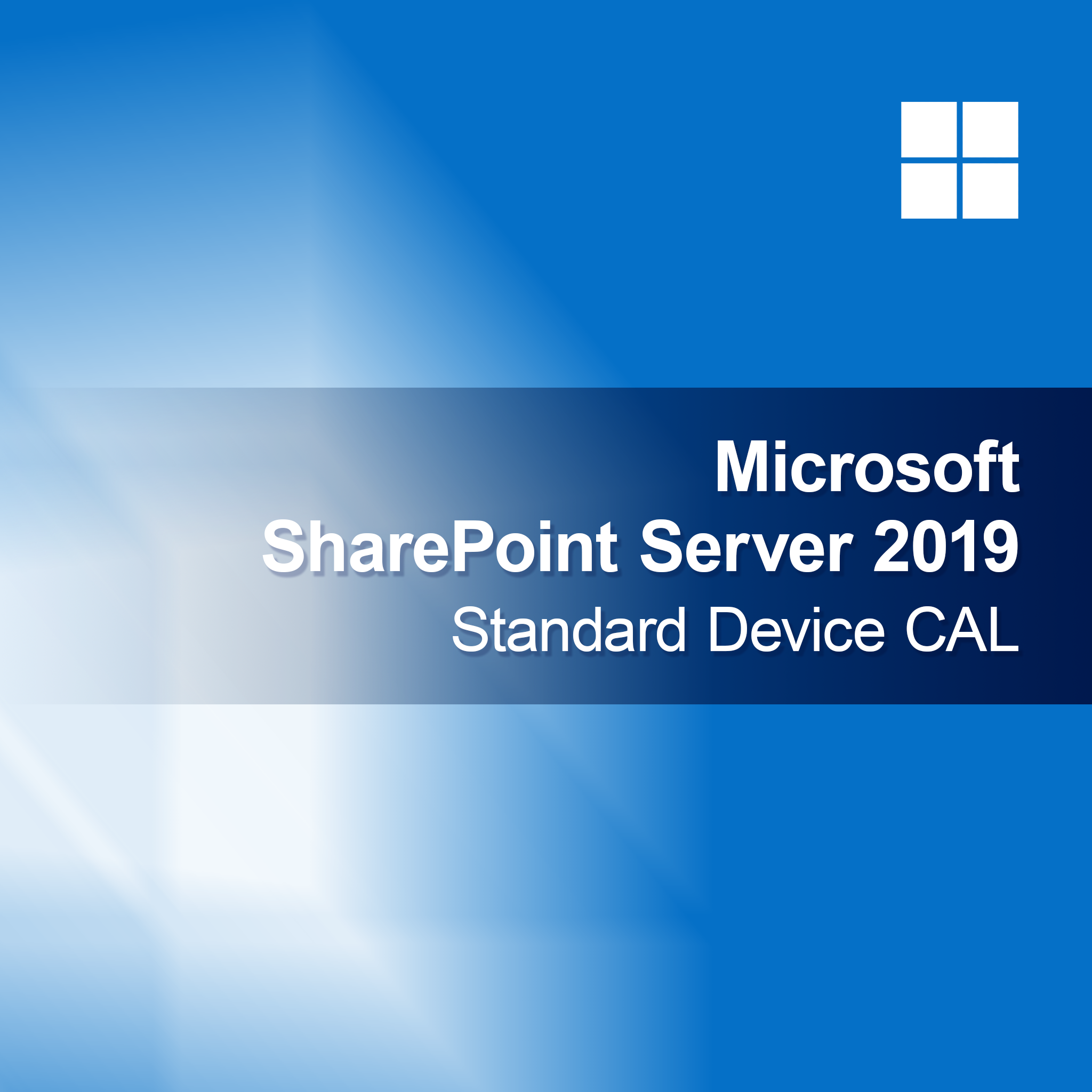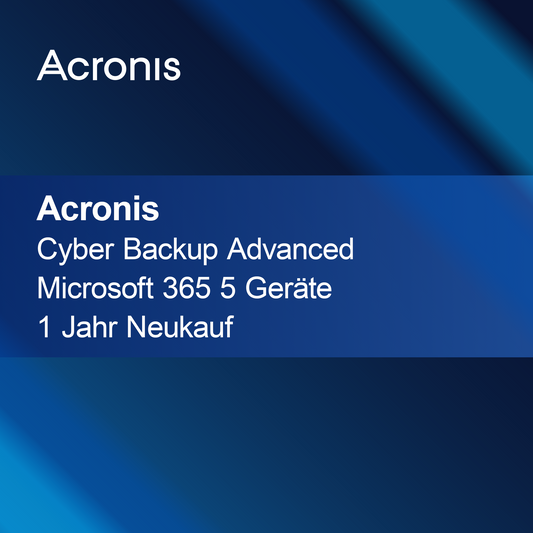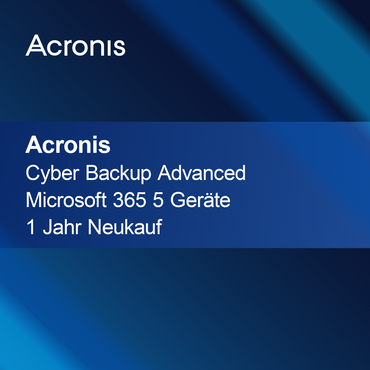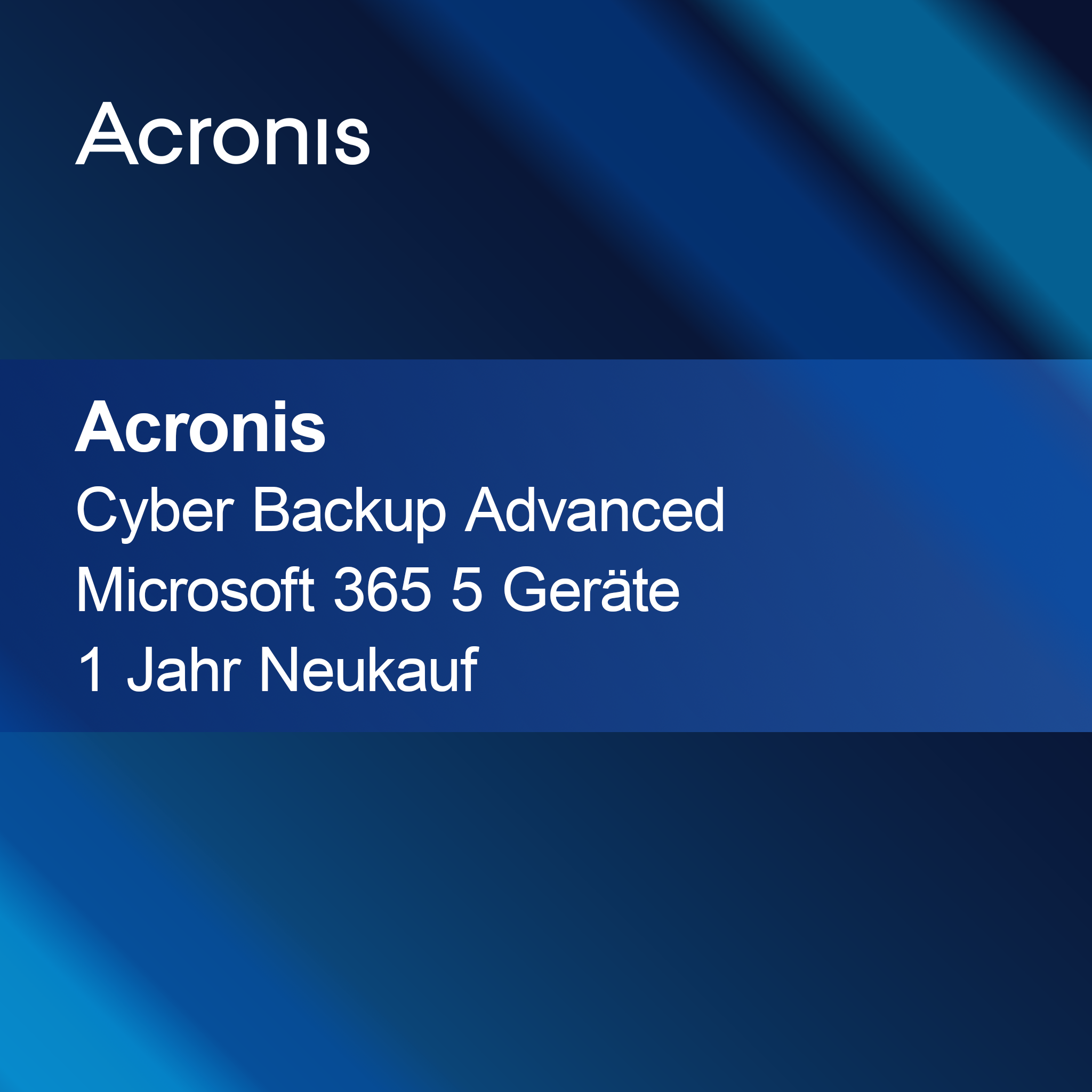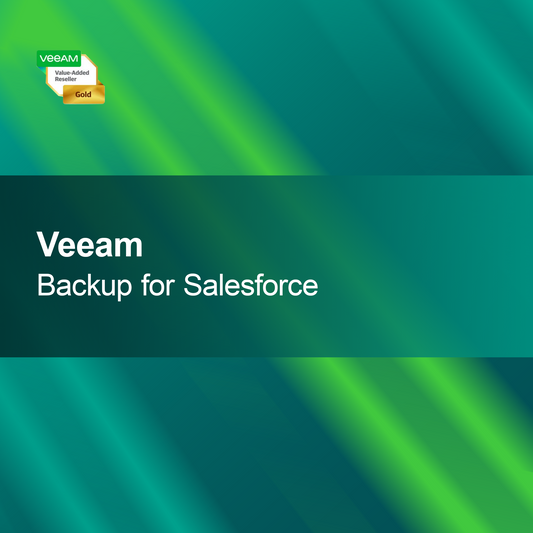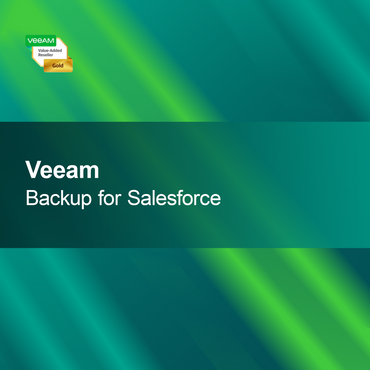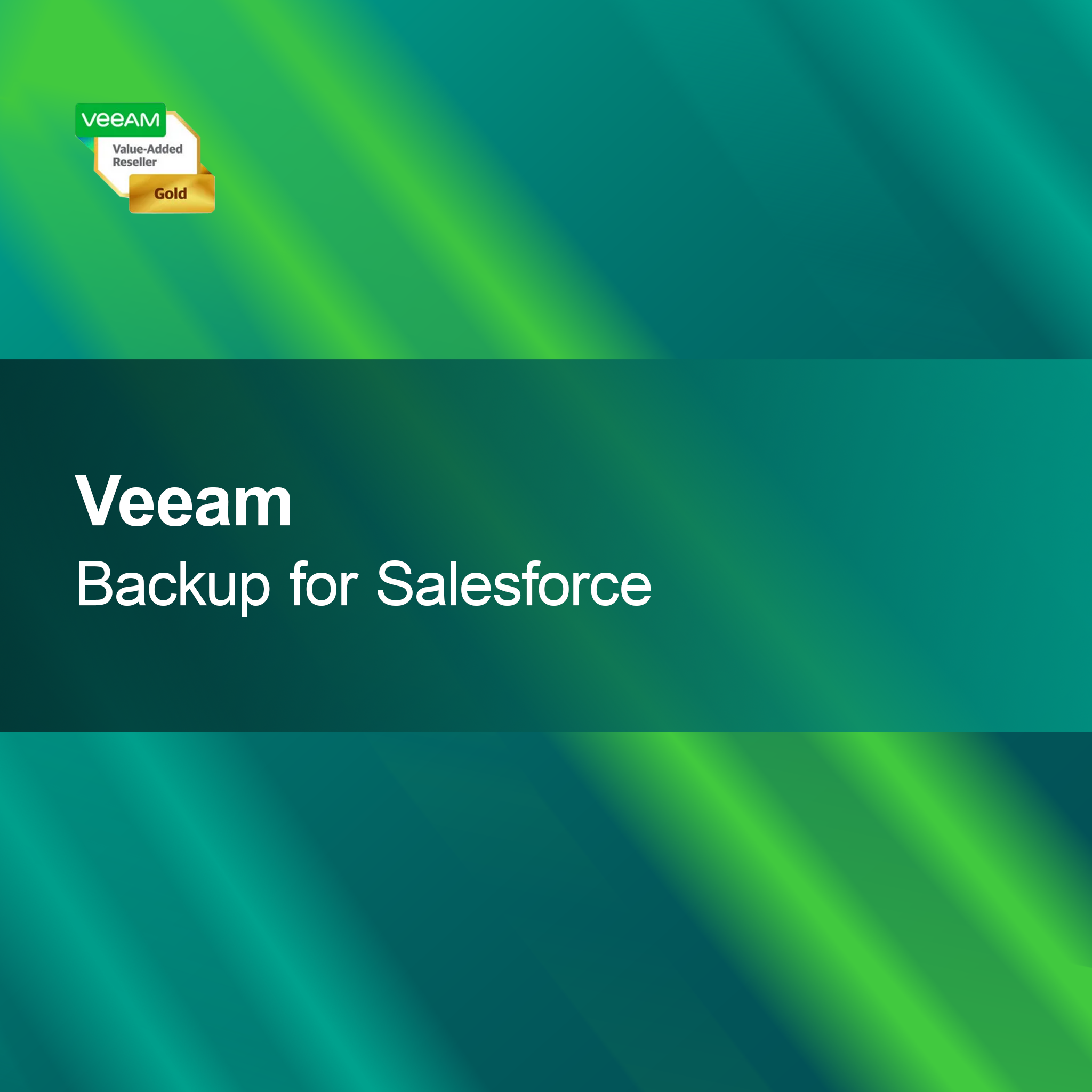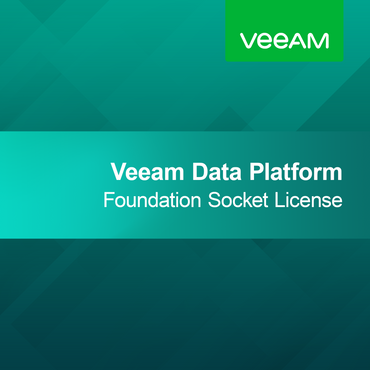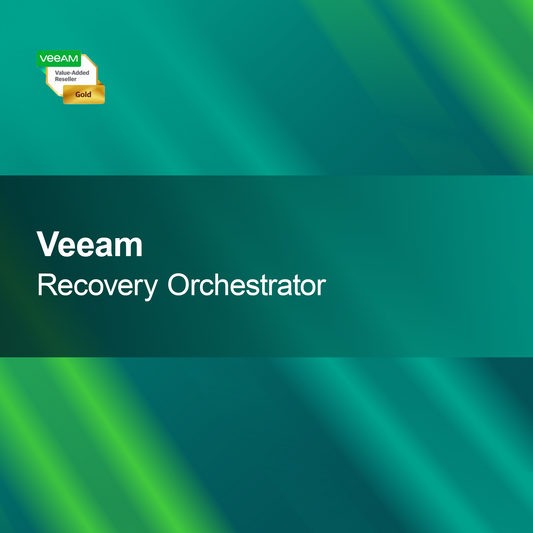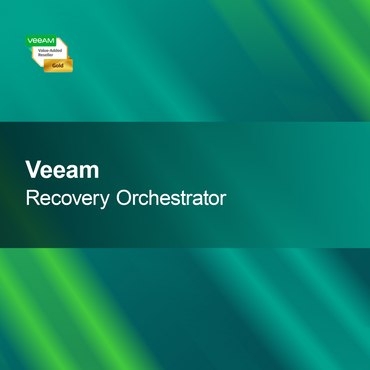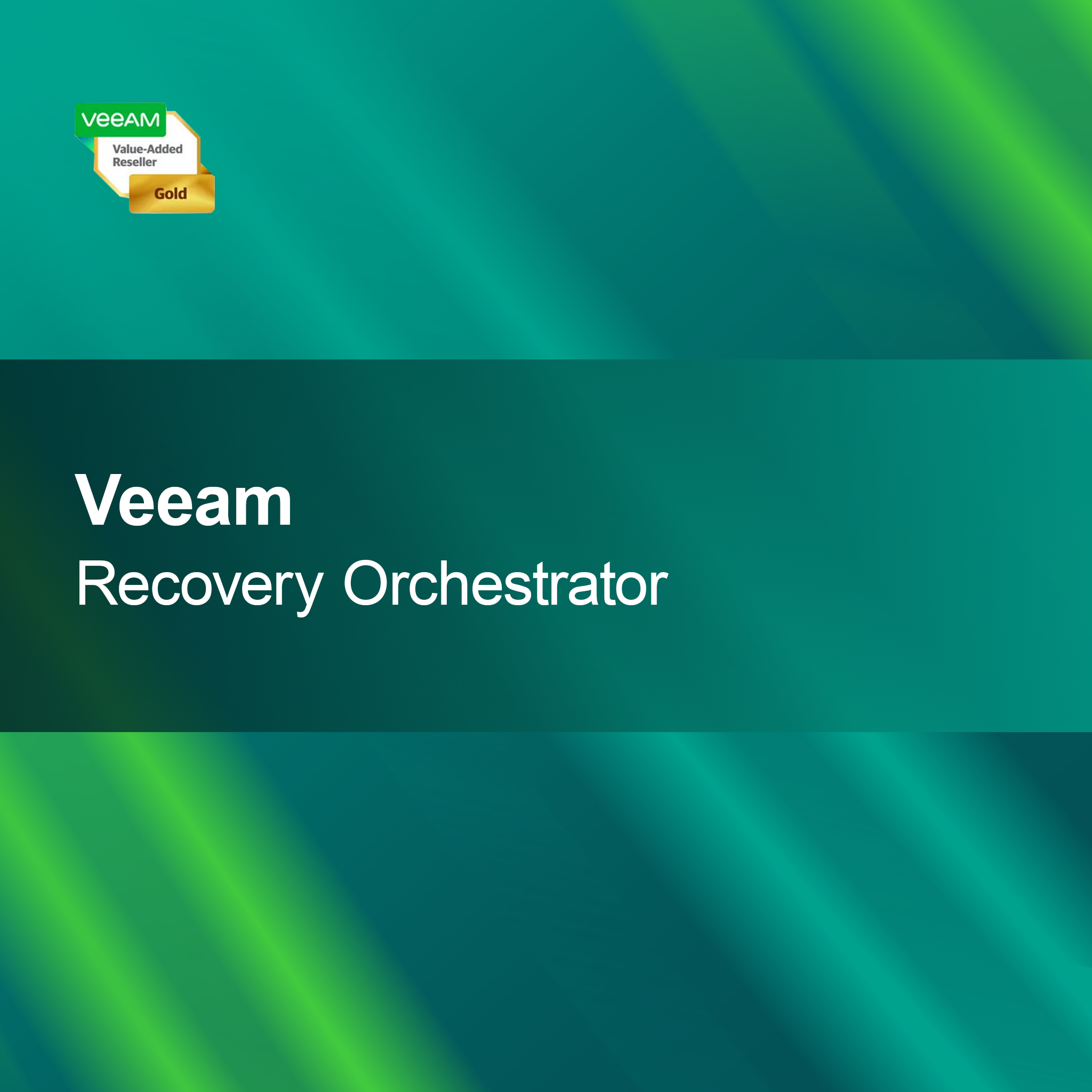-
Microsoft SharePoint Server 2016 Standard Device CAL
Regular price €39,95Sale price €39,95 Regular priceUnit price perMicrosoft SharePoint Server 2016 Standard Device CAL With the license key for Microsoft SharePoint Server 2016 Standard Device CAL, you get a powerful solution for efficient...
-
Microsoft SharePoint Server 2019 Standard User CAL
Regular price €54,95Sale price €54,95 Regular priceUnit price perMicrosoft SharePoint Server 2019 Standard User CAL With the license key for Microsoft SharePoint Server 2019 Standard User CAL, you get a powerful solution that takes...
-
Microsoft SharePoint Server 2016 Standard User CAL
Regular price €39,95Sale price €39,95 Regular priceUnit price perMicrosoft SharePoint Server 2016 Standard User CAL With the license key for Microsoft SharePoint Server 2016 Standard User CAL, you get a powerful solution for effective...
-
Microsoft SharePoint Server 2019 Standard Device CAL
Regular price €54,95Sale price €54,95 Regular priceUnit price perMicrosoft SharePoint Server 2019 Standard Device CAL With the license key for Microsoft SharePoint Server 2019 Standard Device CAL, you get a powerful solution for efficient...
SharePoint Server CAL
What is a SharePoint Server CAL and why do I need it?
A SharePoint Server Client Access License (CAL) is a license that allows users to access the features and services of SharePoint Server. This license is required to ensure that all users accessing the SharePoint platform are properly licensed. CALs are especially important for businesses that want to use SharePoint for collaboration, document management, and other business applications.
What types of SharePoint Server CALs are there?
There are two main types of SharePoint Server CALs: Standard CALs and Enterprise CALs. The Standard CAL offers basic features such as document libraries, lists, and basic collaboration. The Enterprise CAL, on the other hand, includes advanced features like Business Intelligence, Enterprise Search, and additional security options. Choosing the right CAL depends on your company's specific requirements.
How do I acquire a SharePoint Server CAL?
SharePoint Server CALs can be purchased through authorized Microsoft resellers or directly from Microsoft. It is important to determine the number of licenses needed based on the number of users or devices accessing SharePoint. Make sure to select the correct type of CAL to ensure that all required features are covered.
What should I consider when installing SharePoint Server?
When installing SharePoint Server, ensure that your server meets the required system specifications. This includes a supported operating system, sufficient storage, and an appropriate hardware configuration. It is advisable to perform a full system backup before installation and close all other applications to avoid potential conflicts.
- Access to document libraries and lists
- Collaboration in teams and projects
- Advanced features with Enterprise CALs
How do I activate my SharePoint Server CAL?
Activating a SharePoint Server CAL is usually done through the Microsoft Volume Licensing Service Center or by entering a product key provided at purchase. It is important to keep the key safe, as it may be needed for future installations or license transfers. Successful activation ensures that all software features are available.
How does SharePoint Server differ from other platforms?
SharePoint Server differs from other platforms through its comprehensive collaboration and document management features. Compared to solutions like Google Workspace or Dropbox, SharePoint offers deeper integration into Microsoft environments and enables more complex workflows and customizations. If your company already uses Microsoft products, SharePoint can be a seamless solution for your needs.
What system requirements are needed for SharePoint Server?
To successfully install SharePoint Server, your server should be running at least Windows Server 2016 or higher. Additionally, a minimum of 8 GB RAM and 10 GB of free storage space is required, with more recommended depending on the number of users and the complexity of the applications. Check these requirements to ensure the software runs smoothly.
